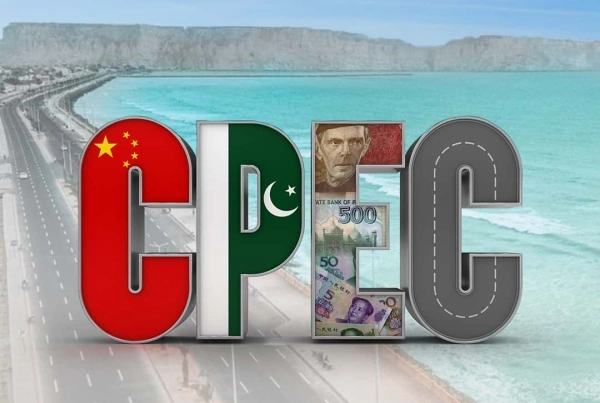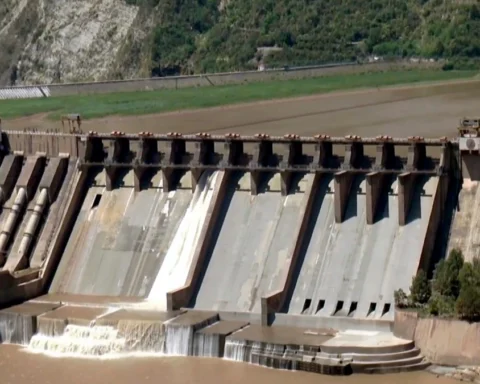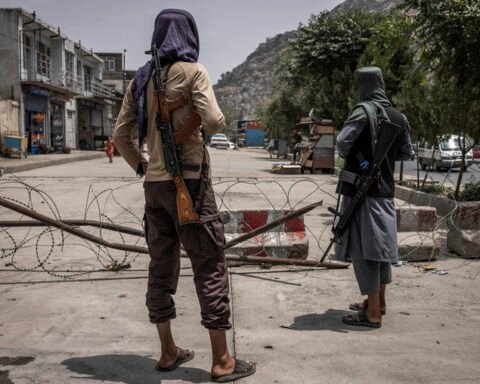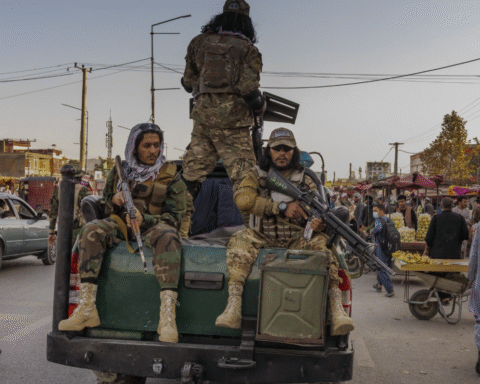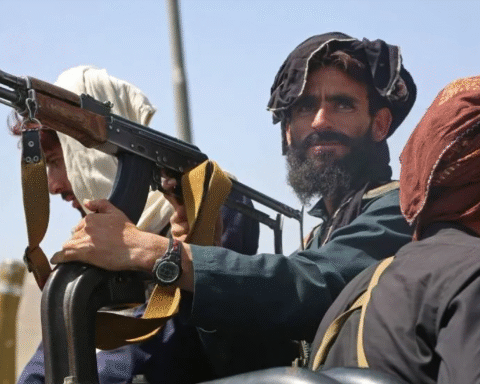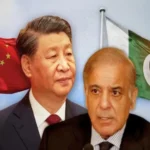CPEC: A Transformative Partnership Navigating New Horizons
Not merely an assortment of infrastructure projects, by the middle of next year (2025), the China Pakistan Economic Corridor (CPEC) is a growing, breathing concept that is enhancing the strategic alliance between Pakistan and China. With the early phases of accomplishing energy and transportation infrastructure, CPEC directly transitions into a different phase: industrial base, enhanced connectivity, and a secure environment construction. Challenges are still there but both countries are determined to make this dream come true to see both prosper together and be regionally integrated. This determination was further in force when the foreign ministers of Pakistan and China expressed their commitment with the CPEC project during the high-level meetings of the Shanghai Cooperation Organization (SCO) in Tianjin, asserting its significance in the context of advancing regional connectivity, economic robustness, and the Belt and Road Initiative in general.
Industrial Development and SEZs Growth
One such story that promotes industrial development is that of the CPEC role in an area of careful, growing development. The ultimate role of Special Economic Zones (SEZs) in Gwadar, Faisalabad and Rashakai has attracted foreign direct investment (FDI), joint ventures. Pakistan government has also come up with foreign friendly incentives that are profitable to investors like tax holidays, one-window operations. The Pak Arabia Business Association (PABA) is seen as one of the key facilitators between the government and Chinese entrepreneurs where the PABA has recommended the establishment of the so called China Desks in the offices of the key departments of government to remove the red tapes, speed up project clearances and to help it adjust to business practices of Chinese economic activities.
As a way of responding to increased labor costs at home, China is contemplating the relocation of industries to Pakistan which would mean transfer of technology, industrial experience and an increment in manufacturing and exports. Agro-processing, engineering, renewable energy and electric mobility are the new joint ventures that are being encouraged, and industrial innovation hubs and pilot zones are proposed to hasten the process of technology absorption and local value addition.
This is demonstrated through the commitment in the allocations of the Pakistan Public Sector Development Programme (PSDP) on the FY 2025 2026, in which there is a funding proposal on CPEC industrial cooperation, and the operationalization of the CPEC Secretariat. PCJCCI is equally pioneering the green technology transfer and eco-industrial modernization to work in tandem with the agenda of ensuring sustainable growth.
Continuity: Material and Electronic Fusion
The backbone of CPEC connectivity has been growing fast. The construction of Motorways like Multan-Sukkur and Hakla-DI Khan has reduced travelling time and the Gwadar Port that is on the verge of being fully functional is strategic location that will play a role as trade gateway to Arabia Sea and Central Asia. Air connectivity has improved with New Gwadar International Airport, from the upcoming ML-1 railway and the Karachi Circular Railway, the logistics and cargo capabilities are bound to change once operational.
There is also digital connectivity which is also under development with cross-border optical fiber cables leading to a Digital Silk Road. The span of the corridor is soon to increase to Afghanistan and Central Asia; such expansion will have more geopolitical and economic coverage.
Other infrastructure achievements have been the completion of the fifth tunnel that the China Civil Engineering Construction Corporation on the relocated Karakoram Highway which is important in ensuring the strategic continuation of trade after the Dasu Dam affected various routes. The Dogah tunnel of 1,242 meters has been fully opened and it has enhanced resilience of the infrastructure.
Protecting the Corridor Security?
Safety is also on the priority list. Pakistan has introduced special security forces, increased patrolling and deepened sharing of intelligence. In Balochistan and Khyber Pakhtunkhwa, where threats of the militants are still present, collaborative efforts with China are being planned, including the conversations about using the services of the private security firms to enhance the capabilities.
The RPO Dera recently assessed the security situation along CPEC pathways, which resulted in the establishment of better inter-agency cooperation, emergency response, and surveillance, making sure safe travel through the strategic corridors.
Skills Development and the Problem of Human Capital
Phase II of CPEC focuses on inclusive growth, and the benefits will flow down to the local communities in terms of more employment opportunities, skills building, and enhanced amenities. Pakistan and China have made agreement to initiate the training programs in AI, agriculture, hospitality and construction, and accepting the skills certification between one another with Saudi Arabia and Oman to align the Pakistani labor with the global markets.
In one of the visits to the Chinese institutions by a NAVTTC delegation, several MoUs were signed to institutionalize TVET cooperation frameworks. High-Skilled Talent Training Center will be set up to train the young in smart manufacturing and e-commerce to ensure top-level manufacturing and e-commerce with lone dominance to the Pakistani position in the future global economy.
An eye on the future
In the future, industrial cooperation, modernization of agriculture, and integration of information technology, and socio-economic elevation will be the future of CPEC. Chaired by the Federal Minister Ahsan Iqbal, 81st CPEC Review Meeting directed the federal ministries to conclude preparations to conduct the 14th cooperation committee (JCC) meeting. Plans are in the works to build a copper smelting plant in Chaghi capable of adding value to the local minerals, but one that is currently almost ready to counter the severe water shortages occurring in Gwadar with its 1.2 MGD desalination plant.
Although there are debt concerns, the two countries refute the so-called debt trap narrative to cite the concessional financing in the form of credit line and the equity-based investments. CPEC is an economics corridor and a geoeconomic solution. It grants strategic access to Arabian Sea to China, it diversifies trade and redefines the geopolitical landscape of South Asia.
The success of CPEC does not only have the possibility of changing the economy of Pakistan, but it also rebalances regional connection, stability, and prosperity in the decades to come.
Disclaimer: The views and opinions expressed in this article are exclusively those of the author and do not reflect the official stance, policies, or perspectives of the Platform.

